
The Ultimate Brand Asset Guide: Everything you need to know as a brand about brand assets
From Coca-Cola’s distinctive bottle shape to Nike's 'Just do it' slogan - and from Duracell's tireless rabbit to Vodafone's iconic jingle. These are all examples of distinctive brand assets.
But what exactly is a brand asset to our brain? Why are they indispensable to brands that want to grow and not let their captured market share slip away into the hands of competitors? And how can you quantify the value of brand assets to your brand?
This guide delivers answers to all these questions - and more.
Table of contents
I. What is a brand asset?
A brand is not active in our minds most of the day. Only when a buying situation occurs, a few brands will make it into our decision process. To what extent your brand reaches this consideration set is largely determined by the strength of your brand assets.
Would you like to see the complete Brand Asset testing report we made for McDonald's (on our own initiative)? You can download the full research report by clicking the button below (PDF, 7.1 MB).
A brand asset is a distinctive visual or auditory cue that activates the brand in the minds of shoppers. Every brand has at least some assets - whether they want to or not. The logo and brand name are among the basic building blocks that give your brand a place in the customer's brain. Brand assets make the logo recognizable and easy to find.
However, the brand logo and name are just the beginning. There exists a strong relationship between brand assets and brand growth: as a brand builds a more solid portfolio of brand assets, market share follows not long after. Byron Sharp describes the science behind how this works in his book How Brand's Grow. Sharp explains that brand assets lead to a brand acquiring a more dominant position in our brains. Put simply, this increases the likelihood of potential customers thinking of this brand in buying situations or - in the case of unplanned purchases - a greater chance of the brand spontaneously catching our eye.
However, a brand asset doesn’t become distinctive overnight. A requirement for this is that the brand asset is famous and unique. In other words: the asset must be widely recognized as belonging to your brand (Fame), and should not simultaneously activate other brands in the category (Uniqueness).
Curious how we monitor Fame and Uniqueness? Click here to read more about Distinctive Brand Assets Research & Measurements.
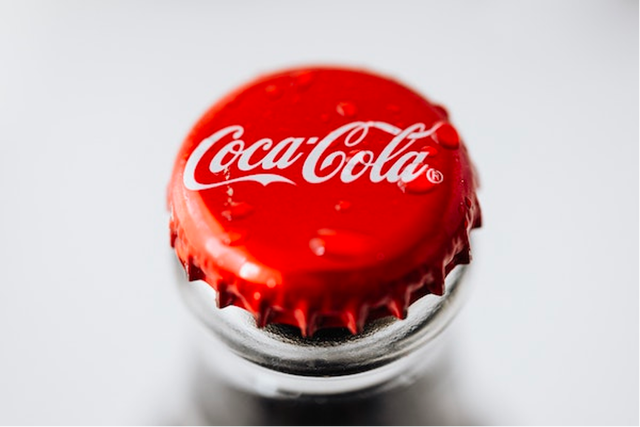
I.I. Function of brand assets
Brand assets help your brand gain more ground in the brain. The associative network and the number of neural branches surrounding your brand in the brain increases. This is beneficial for brand growth. The larger a brand's web of associations, the more likely we are to think of it as a customer. This causes the brand to automatically grab attention in buying situations.
Unsurprisingly, new brands still have only weak association networks in our brain. The brand simply hasn't had the chance to attach new associations to it yet. This brand is rarely top of mind. And when we encounter such a brand, we are likely to pass it by unnoticed. This is also true for brands that do not advertise much and therefore have not built up a position in our brain.
The association networks for larger brands with many brand assets look completely different. Whereas newcomers are similar to a lone triangle player in terms of neural activation, a well-known brand ushers in a full associative orchestra in our heads.
The size of the association network turns out to be crucial for the success of a brand. We list the positive effects in the next section.
I.II. Effects of strong brand assets
The association network of a brand acts as a kind of glue to which new associations stick more easily: a neural snowball effect. As a brand has conquered a larger area in our brain, it enjoys several advantages that make it easier to make this area even larger.
- Shoppers are more likely to think of the brand on their own when they are going to buy something from the category
- The brand stands out more quickly on the shelf
- Positive user experiences stick better in the memory (because there is a more extensive associative network to which new associations can attach themselves)
- Advertisements are more strongly linked to the corresponding brand
- Brand assets can function in advertisements as independent brand identifiers other than the logo (such as the Nespresso tune, which directly communicates the brand without a logo)
II. Brand Assets and mental availability
Thanks to scientific research we are learning more and more about the neural processes behind the growth of brands. The key mechanism behind market success is what Byron Sharp calls 'mental availability'. Powerful brands are distinguished by possessing a high degree of 'mindshare' in the brain. Branding is literally building and maintaining brand associations in as many brains as possible.
II.I. Brand assets help the brain
Our brain is a lazy organ that has evolved over millions of years to make good choices with as little energy consumption as possible. We operate automatically and use our attention sparingly. In purchasing environments, this leads to 99.99% of all stimuli being filtered out and having no chance of playing a significant role in our choice process. This makes it difficult for brands to break through our natural attention barrier.
Mental availability, which is the size of the associative network of a brand in our brain, is the most important factor that determines whether a brand has a chance of getting a glimmer of attention during the choice process. A larger network results in us thinking of the brand faster when a buying situation arises (good news for planned categories), and also more likely to recognize it when we happen to walk by it (good news for unplanned impulse categories).
III. Byron Sharp on Brand Assets
If you are into branding and marketing, chances are you've heard about, or read, Dr. Byron Sharp's book How Brands Grow. In this publication, marketing professor Sharp dismantles numerous marketing myths that have their origins in gut thinking, supported by empirical counter-evidence. His book has changed many branding strategies and provided it with a more solid scientific basis.
How Brands Grow has brought about a mega change in the world of branding and marketing. More than ever, gut feeling has given way to the use of empirical data to make marketing decisions.
The book maps out which factors are guiding brand growth. Sharp distinguishes between physical availability and mental availability.
Physical availability is the availability of a product. The easier a brand is to obtain, the greater the chance of a purchase. This applies both on macro level (the number of sales channels in which the product is available) and micro level (shelf position and number of facings of the product).
Mental availability refers to the extent to which consumers think of the brand in buying situations. Simply put, the more extensive the memory network of the brand in our brain, the more likely it is that the brand will stand out to us and be remembered.
III.I. Category entry points and Brand Assets
A strong brand memory network is first established by linking the brand to so-called category entry points (CEPs). These are the typical usage moments and contexts (think of Budweiser, which has CEPs such as ‘to drink with friends’ or ‘when I need beer for people that don’t like the taste of beer’), which you can load implicitly and explicitly through advertising.
But even when your brand has conquered the necessary category entry points, it does not mean that you have reached a position in the customer's choice process. The brain is lazy and focuses on easily accessible and/or recognizable brands. This requires brand assets.
Brand assets function like the oil the smoothens the CEP memory network. They make it possible that on the one hand all your branding activities are actually linked to the brand, and on the other hand become active again when the customer is in a buying situation. Brand assets thus act as landmarks for the brand along the many touch points. The more unique and distinctive cues a brand possesses (color, shape, font, slogan, etc.), the greater the chance that an advertisement or packaging for this brand will succeed in capturing our attention.
In short: brand assets give your brand a more valuable position in the mind of the customer. Neurally, a more extensive network is created in the customer's memory, which then can branch out even more widely. There is a snowball effect here: because neural networks intertwine, the more brand assets your brand possesses, the easier it becomes to add more assets and category entry points.
IV. Brand Asset Metrics: Fame and Uniqueness
The strength of a brand asset can be expressed in terms of recognition ('Fame') and uniqueness ('Uniqueness').
IV.I. 1- Fame
Something can only be regarded as a brand asset when it actually relates to your brand. A strong brand asset automatically reminds people of your brand. Byron Sharp calls this the 'Fame' metric. A logo builds fame relatively quickly. A slogan is more difficult and requires long-term advertising campaigns to build a strong brand association. More abstract assets such as color and font take even longer to build fame.
How to increase fame: step up frequency and channels
When an asset is not yet known, the key is to use it consistently in advertising campaigns, ideally spread across multiple channels to reach a large group of category buyers.
IV.II. 2- Uniqueness
Fame by itself is not enough. Even if 100% of category buyers associate a brand asset with your brand, it is still possible that at the same time numerous other brands become active in their minds. We see this occur often in reality, for example, with color assets in the fast-food world. Many fast-food buyers think of McDonald's when they see red, but at the same time, they also think of KFC, Domino's, and Pizza Hut; a lot of familiarities, but little uniqueness.
An asset that scores high on uniqueness owns the brand linkage: its recognition is not shared with other brands.
Increase uniqueness: specificity
Merely showing the asset more often is of little help in building more uniqueness. As long as your competitors use similar assets in their marketing, they will have to share the territory in the customer's mind. The solution here is to hone the asset and thus make it more unique. You can address the original asset in two ways:
- Making it more distinctive
- Combine with other assets
Consider, for example, a brand asset such as color: a stand-alone color is difficult to make unique - there are simply too few colors in the pallet - but in combination with other colors or shapes you can create a highly unique overall picture.
IV.III. The Brand Asset Grid: from metrics to practice
When you want an overall view of the strength of your brand assets, the Fame and Uniqueness metrics provide a handy tool to oversee your assets at a glance.
The Brand Asset Grid shows Fame on the vertical axis and Uniqueness on the horizontal axis. This creates four quadrants, each with its own optimal practical route:
Use or lose (high fame, high uniqueness)
These assets make many buyers think of your brand, and rarely of other brands. These assets play a crucial role in the recognition of your brand. Nurture these assets and don't set them aside too easily.
Investment potential (low fame, high uniqueness)
A minority of category buyers link this asset to your brand, but those that do link exclusively to your brand. So, the asset shows great potential, but could still benefit from more and broader exposure among a larger audience.
Avoid solo use (high fame, low uniqueness)
Many category buyers associate this asset with your brand, but at the same time with many other brands. They symbolize the overall category more than a single specific brand. The solution is not to use these assets stand-alone, but to make them more unique by always showing them combined with other assets. For example, only the color does not make a brand recognizable, but the combination of shape and color immediately evokes the right association.
Ignore or test (low fame, low uniqueness)
These assets are currently of little value to your brand. If the asset has been around for years, this is a sign that it can be replaced without any problems (ignore). If the asset is new, it is a sign that it needs further research to establish its potential (test).
Do you want to know how your brand assets score in this matrix? We've got you covered via our specialised Brand Assets Research toolkit.
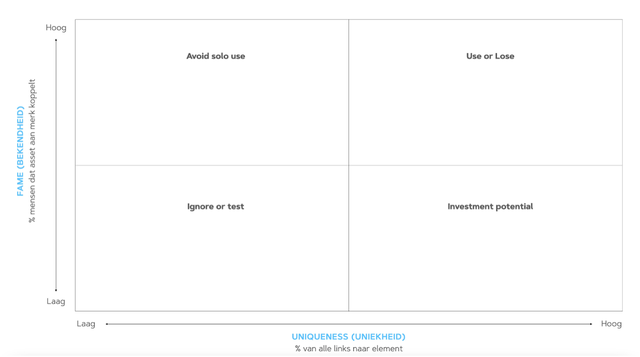
V. Types of Brand Assets
Brand assets come in many shapes and sizes. Literally, any sensory cue that can be used by your brand on a consistent basis is a suitable candidate. Below, we list the most common brand assets.
V.I. Color(combinations)
When thinking of typical brand assets, we are quick to jump to color: McDonald's yellow, Coca-Cola red, and Cadbury purple. And while color can leave a strong mark on the attractiveness and experiential value of these brands, a stand-alone color is rarely a distinctive brand asset. The reason lies in the lack of uniqueness: the handful of possible colors are shared by a huge number of brands, often even within the same category. And looking for distinction in a specific hue is often out of the question; few people can spontaneously see the difference between McDonald’s and Coca-Cola’s shades of red.
So, color mainly plays a role as a supporting brand asset in combination with more unique brand assets like shape and typography. Color can also be combined with other secondary colors for a stronger - but still not too strong, on itself - recognizability.
V.II. Shape
Forms are one of the most important brand asset categories in that they can quickly reach high levels of fame and uniqueness. From Nike's swoosh to ‘WC-Eend’s’ recognizable packaging shape.
The effective usage of shapes can be found in logo design (the bite from the Apple logo), supporting symbols (the Kellogg’s rooster), and finally, the product or packaging shape itself (the Coca-Cola bottle).
V.III. Jingles
When we think of brand assets we often think of visual cues, but in principle, there are assets conceivable for every sense. Jingles are through the combination of sound and (optionally) speech extremely suitable to build distinctive brand assets.
V.IV. Slogan
The textual extension of the jingle is the slogan, which plays a key role in both advertising and on-pack communication. Slogans also have a high potential for gaining fame and uniqueness, provided the imagination of the creator actually breaks new ground.
V.V. Songs/sounds
Music has the potential to become a strong brand asset, as long as it is used exclusively by one brand. A brand that uses popular songs in its commercial therefore only contributes sparsely to recognition with its choice of music. Therefore, large successful brands prefer to compose their own music, so that each note contributes maximally to the value of their brand asset portfolio.
V.VI. Celebrities and characters
When celebrities show up in advertising campaigns for long periods, the celebrity itself can become a brand asset. For example, we saw this happen with Nespresso, a brand that has been able to snag George Clooney for almost two decades.
However, the celebrity as a successful brand asset is the exception rather than the rule, as celebrities usually feature briefly in campaigns (bad for fame) or pop up in numerous other brands (bad for uniqueness). A safer choice is to develop a character as a brand (such as Ronald McDonald), which can easily be made unique and can be played by multiple actors so that continuity is guaranteed.
V.VII. Scent
The nose is an undervalued sense in marketing. It is because of this that scent offers an exceptionally strong opportunity to develop a distinctive brand asset. Brand scents are becoming more and more common in the service industry (hotels, restaurant chains, airlines, clothing stores), but also the packaging of products offers opportunities for scent marketing. We have known it for decades in the automotive world - where each new car is accompanied by its own distinctive scent - but a unique brand scent applies to the unpacking ritual of any product.
VI. Practical implications for branding and marketing
Brand assets do not appear out of thin air. A strong asset portfolio starts with a smart selection of distinctive brand assets combined with long-term and consistent implementation of these assets along as many touch points as possible.
For the branding practice, here are three important tips to build your assets purposefully and quickly.
VI.I. Build asset by asset
Our brain is most able to create new memory traces when it is given small pieces of new information to process within a familiar context. The implication of this for the practice of brand assets is simple: introduce your assets one at a time.
A simultaneous introduction of a new slogan, jingle, visual rebranding, and new color profile may feel like the best road to attention, but at the end of the day, it pleases the brand manager who wants to put a personal stamp on the brand at all costs.
It is more effective to introduce assets step by step. For each new asset, you monitor the increase in awareness and uniqueness (see next section on brand asset research) and adjust where necessary in output, channels, and frequency of use.
VI.II. Be consistent
Your own brand quickly gets boring. That is why brand and marketing managers often feel the temptation to throw all the distinctive features of the brand overboard every few years and start with a clean slate.
We strongly urge: don't give in to this temptation.
It takes years to build strong brand assets. Once matured, these brand assets provide a lifelong contribution to the recognition of your brand and the ability to create new assets faster. The larger the memory network of your brand, the easier it is for additional associations to stick to it; this is the snowball effect of brand assets.
So, it's important to give your brand assets the time to mature in terms of familiarity and uniqueness. Monitor your brand assets to get an objective view of which assets play a key role in the recognition of your brand. These are the assets you want to be careful with. Changes are allowed as long as they do not dent the fame and uniqueness of the asset.
At the same time, brand asset monitoring also reveals which assets do not contribute to the recognition of your brand at all. These assets are begging to be sharpened or replaced. So, there is definitely work to be done by the brand and marketing manager; however, you need to be clear about which direction you want to channel this creativity.

The McDonald's logo has remained very consistent in recognizable elements over the years
Click here to go to the blog which explains why McDonald's dare to advertise without a logo.
VI.III. 3- Don't put meaning first
Some brand managers believe that every part of the brand must be meaningful.
This wisdom certainly holds true for many brand associations. For example, category entry points of a brand are only valuable when they tie into a real existing use case among potential customers.
However, brand assets are an exception to the rule for meaningful brand communications. They serve as cues that make the brand known and distinctive, and these are therefore the two measures against which you should measure the suitability of a brand asset. Does the asset have the potential to generate familiarity? And is it distinctive compared to other players within the category? If so, you have a good candidate.
A meaningful asset is a nice bonus (like the soft Puppy on the soft Page toilet paper), but it is not a prerequisite for the brand asset to perform its core task: anchoring the brand firmly in the mind of the customer. Nike's swoosh and Apple's brand name could easily have been shot down for their lack of surface level meaning, but their legendary status proves that a good brand asset does not require meaning (and meaning does not automatically make a good brand asset).
VII. Measuring Brand Assets
How do you measure the strength of your brand asset portfolio? There are several relatively simple research techniques you can use to get a clear and objective overview of your brand asset portfolio.
A brand asset survey aims to quantify the two most important metrics of a brand asset: fame and uniqueness.
The basic test shows a brand asset, where respondents write down all the brands that come to mind. In doing so, the category is promoted, but no further information is given. This setup (spontaneous recognition with promoted category) has been shown by validating research to be the most predictive and reliable (Romaniuk & Nenycz-Thiel, 2014). The asset can be shown both stand-alone and in conjunction with other assets. This provides insight into which assets can stand on their own to make the brand recognizable, and which assets need the context of other assets.
A brand asset test takes place with 100-200 respondents per cell. This provides reliable results (i.e., if you would have done the test at the same time with a sample other respondents, the results would be the same). Curious how we investigate this? Click here to read more about Distinctive Brand Assets Research & Measurements.
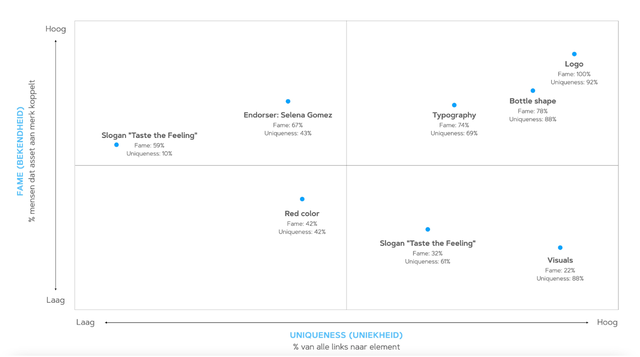
VII.I. Metric: Fame
The fame of an asset can be calculated as the percentage of respondents that associate the asset with the target brand.
For example, 100 out of 150 respondents think of the target brand when they hear the slogan. The asset scores 67% (100/150) on Fame.
VII.II. Metric: Uniqueness
The uniqueness of an asset can be calculated as the number of times the target brand was mentioned, divided by the total number of mentioned brands. When an asset often reminds of multiple brands, it scores low on uniqueness.
For example, the slogan was linked to the target brand 100 times. Some respondents (also) linked back to other brands; in total, another brand was mentioned 70 times. The asset has a uniqueness of 59% (100/170).
VII.III. Implicitly measuring brand assets with neuromarketing
The metrics Fame and Uniqueness can be asked indirectly through online survey research. In addition, two more in-depth neuromarketing research methods are available to gain deeper insight into the strength of brand assets. These methods use reaction times as a measure of the strength of an association and thus tap into the more unconscious processing of the respondent.
Recognizability with the Blur Test
In the Blur Test, a brand asset appears blurred on the screen, then slowly becomes sharper. The respondent has to click from multiple-choice options to which brand this asset belongs. The blurred display closely resembles the initial automatic processing our brain performs when we process information in the supermarket. Based on the average reaction time, we gain insight into the unconscious recognition of brand assets.
Subconscious associations with Intuitive Response Test (IRT)
If you want to test the extent to which a brand asset strikes the desired associative or emotional chord, the Intuitive Response Test (IRT) offers a solution. This test is considered a faster version of the famous Implicit Association Test (IAT). The underlying mechanism is the same: based on reaction times to a categorization task, we gain insight into the actual unconscious association between a brand asset and a desired characteristic.
VII.IV. Have a brand asset survey carried out
When you want quick and clear insight into the strength of your brand assets, Unravel Research offers a form of research that quickly gives you the information you are looking for. The brand asset research consists of a basic test (aimed at Fame and Uniqueness), which can optionally be extended with a Blur Test (aimed at recognizability) and an Intuitive Response Test (aimed at unconscious association).
VIII. Books on Brand Assets.
The concept of the measurable Brand Asset as a driver of brand growth has found its way into the marketing world thanks to the books of Byron Sharp. Within the How Brand's Grow series started by him, the following publications are currently available:
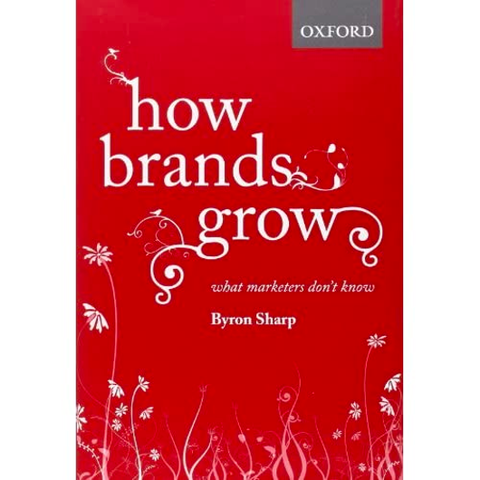
How Brand Grow, part 1
Byron Sharp
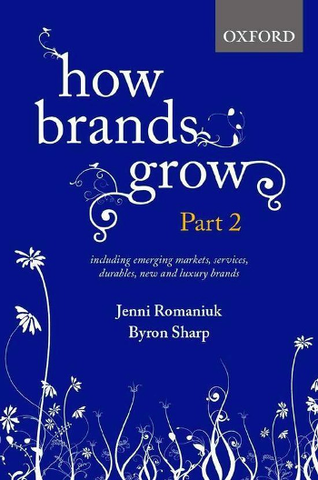
How Brand Grow, part 2
Jenni Romaniuk and Byron Sharp

Building Distinctive Brand Assets
Jenni Romaniuk
IX. References
Romaniuk, J., & Nenycz-Thiel, M. (2014). Measuring the strength of color brand-name links: The comparative efficacy of measurement approaches. Journal of Advertising Research, 54(3), 313-319.
Romaniuk, J. (2018). Building distinctive brand assets. Oxford University Press.
Sharp, B., & Romaniuk, J. (2016). How brands grow. Oxford University Press.
Ward, E., Yang, S., Romaniuk, J., & Beal, V. (2020). Building a unique brand identity: Measuring the relative ownership potential of brand identity element types. Journal of Brand Management, 27(4), 393-407.






